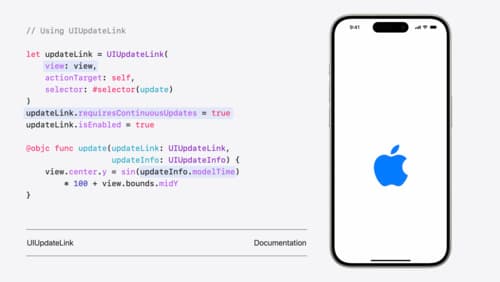what's new in UI test?
Asked on 2024-07-31
1 search
What's New in UI Testing
At WWDC 2024, Apple introduced several new features and improvements related to UI testing, particularly focusing on the new Swift Testing framework. Here are the key highlights:
-
Swift Testing Framework:
- Introduction: A new testing framework built from the ground up for Swift, named Swift Testing, was introduced. It features expressive APIs that simplify writing tests and is cross-platform, making it versatile for various platforms and domains. Platforms State of the Union
- Parameterized Tests: Swift Testing allows for parameterized tests, where each provided argument runs in parallel as its own test case. This helps in efficiently managing and running multiple test cases. What’s new in Xcode 16
- Tag-Based Organization: Tests can be organized using a flexible tagging system, which helps in selectively running tests across the test suite. This feature is integrated into Xcode 16, where the test navigator organizes tests by tag and shows parameterized tests. Platforms State of the Union
- Concurrency: Swift Testing takes full advantage of Swift's concurrency features, running all tests safely in parallel. Platforms State of the Union
- Migration from XCTest: Guidance is provided for migrating from XCTest to Swift Testing, including consolidating multiple XCTest methods into parameterized tests and using global test functions for single-method classes. However, XCTest should still be used for UI automation APIs and performance testing APIs. Meet Swift Testing
-
Xcode 16 Enhancements:
- Test Navigator: The test navigator in Xcode 16 displays each test case individually, making it easier to diagnose and fix issues. It also supports tag-based organization for better test management. What’s new in Xcode 16
- Inline Presentation: The source editor in Xcode 16 provides a rich inline presentation to help diagnose what went wrong when a test fails. Platforms State of the Union
These updates aim to make UI testing more efficient, organized, and integrated with the latest Swift features, enhancing the overall development and testing workflow.

What’s new in UIKit
Explore everything new in UIKit, including tab and document launch experiences, transitions, and text and input changes. We’ll also discuss better-than-ever interoperability between UIKit and SwiftUI animations and gestures, as well as general improvements throughout UIKit.

Xcode essentials
Edit, debug, commit, repeat. Explore the suite of tools in Xcode that help you iterate quickly when developing apps. Discover tips and tricks to help optimize and boost your development workflow.

Platforms State of the Union
Discover the newest advancements on Apple platforms.
